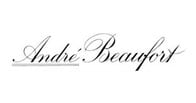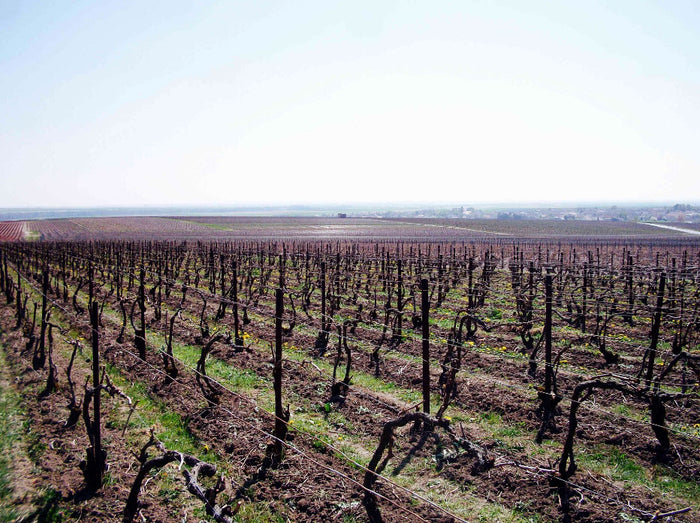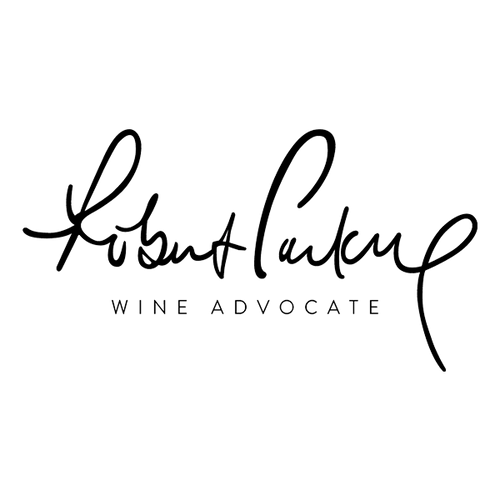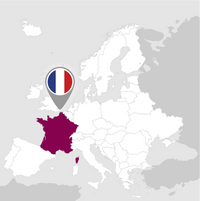描述
Champagne Brut Reserve Polisy by André Beaufort takes its name from the department of Aube in the Côte des Bars, from which I come from the Pinot Noir and Chardonnay grapes, obtained from vineyards located on a clayey soil and cultivated in organic with homeopathic products and also using aromatherapy.
After the manual harvest, the grapes are pressed and the must is decanted for 12 hours in special containers, so that the coarser parts lie on the bottom. Spontaneous fermentation takes place in parcels made of steel and wooden barrels. In order not to use too high sulfur doses, Beaufort favors the progression of malolactics, spontaneously, for their base wines. Bottle fermentation is carried out according to the Champenoise method and the wine stops on yeasts for 24 months. Simply unique is the skill with which the wines are unleashed at Beaufort's volley, not spectacular, but because this was the technique used by avi in ??the Champagne area. Specifically, the wine cellar has the opportunity to hear its wines, as if they were children, in their maturing phase, breathing the aroma they express in a bottle that just broke out. In this way, one can understand, by participating in their elevation process, how to comprehend them thoroughly and perfect their edges through the various doses.
獎項

香水

顏色

味道
服務於:
06 - 08 °C.
長壽:
10 - 15 years

- 生產的瓶子: 1.969
A peculiarity: the wines are still "to the volley", not folklore, but because Beaufort breathes once more the wine of each bottle can understand and perfect it. In order not to use herbicides but contain weeds, we work the soil with the hoe, taking care not to inhale the vine roots. The soil is enriched with vegetable compost produced in the company enriched with meat and bone and blood meal. This preparation is scattered across all vineyards by protecting it from drought and helping to maintain the amount of humus needed for soil organic. Erosion is virtually nothing because soil, thanks to compost, mechanical machining and the presence of organisms such as earthworms, is permeable and well drained so that the enrichment of groundwater groundwater (minimizing the effects of floods and droughts) .
In the vineyards you work all year long. In February and March, after frost, the pruning works begin to contain yields and get better ripening. At the beginning of June, the branches of the vineyard were linked to parallel iron wires, then shredded several times during the summer. Towards the middle of June, after flowering, it is possible to evaluate the yields of the vintage. In organic agriculture production is lower. In the first years of conversion, yields declined by one third.
The main fungal diseases are mildew and oidio. For their treatment, biological regulation allows the use of copper and sulfur. However, these products have a certain toxicity that creates imbalance in wildlife. For this reason, the Beaufort since 1974 have experimented with the use of essential oils that limit the development of diseases and since 1980 have explored the field of homeopathy. It must be acknowledged, however, that in some climatically difficult times, nature affirms its supremacy. The biggest losses are caused in the spring because of frosts that weaken the vine and make it more susceptible to fungal diseases. Approximately one hundred days after flowering began harvest, from mid September to early October. The date is set by prefecture ordinance but the Beaufort evaluates the maturation.
The pressing of grapes is carried out immediately after harvesting. The must flows from the press into the decanting tanks where it will remain at least 12 hours so that all solid elements settle down. Often a second "blur" is performed. The must is then poured into barrels or tubs where alcoholic fermentation is triggered by indigenous yeasts. Once the fermentation has been completed and a quiet wine is obtained, during the winter, it is poured. To avoid using too much SO2, in the spring let malolactic fermentation spontaneously activate. This second fermentation softens the wine slightly, which is why many "maison" re-enter it, but Beaufort thinks that "everybody has his style". At this point bottling takes place, with the addition of unrefined cane sugar or concentrated grape must and natural yeasts. The bottles remain so for months or years. Champagne legislation requires a minimum of fifteen months for a non-millennium and three years for millennia. But a vintage Champagne flourishes at least five years on its yeast. The elimination of the deposit (mouthpiece) is carried out by hand at "the vole" after about a month of "remuage" stirring on the "pupitre" to converge the "bottom" towards the neck of the bottle. During this process wine is oxygenated, contributing to its development. However, this oxygenation must be limited to avoid undesirable oxidation phenomena. 閱讀更多


| Name | Andre Beaufort Champagne Polisy Brut Nature Reserve |
|---|---|
| Type | White organic classic method sparkling wine pas dosé |
| Denomination | Champagne AOC |
| Size | 0,75 l |
| Alcohol content | 12.0% 按體積 |
| Grape varieties | 80% Pinot Nero, 20% Chardonnay |
| Country | France |
| Region | Champagne region |
| Vendor | Andre Beaufort |
| Story | In 1969, André Beaufort discovered an allergy to the synthesis products, which started his unconventional path of organic farming. |
| Origin | Six hectares and a half of vineyards in Champagne, partly in Grand Cru at Ambonnay and partly in Polisy, in the Aube, did not receive any treatment |
| Soil composition | Soil preparation (zappatura) and use of vegetable and animal compost to maintain the humus necessary for life. For many years, Beaufort has experienced homeopathy and aromatherapy to combat resistance to fungal diseases, such as deworming, minimizing the use of copper and sulfur (tolerated by biological discipline). "I personally realize mixtures and dilutions of essential plants and oils," says Jacques Beaufort. Erosion is virtually nothing because soil, thanks to compost, mechanical machining and the presence of organisms such as earthworms, is permeable and well drained so that the enrichment of groundwater groundwater (minimizing the effects of floods and droughts). In order not to use herbicides but contain weeds, we work the soil with the hoe, taking care not to inhale the vine roots. The soil is enriched with vegetable compost produced in the company enriched with meat and bone and blood meal. This preparation is scattered across all vineyards by protecting it from drought and helping to maintain the amount of humus needed for soil organic. |
| Production technique | In the vineyards you work all year long. In February and March, after frost, the pruning works begin to contain yields and get better ripening. At the beginning of June, the branches of the vineyard were linked to parallel iron wires, then shredded several times during the summer. Towards the middle of June, after flowering, it is possible to evaluate the yields of the vintage. In organic agriculture production is lower. In the first years of conversion, yields declined by one third. The main fungal diseases are mildew and oidio. For their treatment, biological regulation allows the use of copper and sulfur. However, these products have a certain toxicity that creates imbalance in wildlife. For this reason, the Beaufort since 1974 have experimented with the use of essential oils that limit the development of diseases and since 1980 have explored the field of homeopathy. It must be acknowledged, however, that in some climatically difficult times, nature affirms its supremacy. The biggest losses are caused in the spring because of frosts that weaken the vine and make it more susceptible to fungal diseases. Approximately one hundred days after flowering began harvest, from mid September to early October. The date is set by prefecture ordinance but the Beaufort evaluates the maturation. A peculiarity: the wines are still "to the volley", not folklore, but because Beaufort breathes once more the wine of each bottle can understand and perfect it. The elimination of the deposit (mouthpiece) is carried out by hand at "the vole" after about a month of "remuage" stirring on the "pupitre" to converge the "bottom" towards the neck of the bottle. During this process wine is oxygenated, contributing to its development. However, this oxygenation must be limited to avoid undesirable oxidation phenomena |
| Wine making | The pressing of grapes is carried out immediately after harvesting. The must flows from the press into the decanting tanks where it will remain at least 12 hours so that all solid elements settle down. Often, a second "bouquet" is performed. The must is then poured into barrels or tubs where alcoholic fermentation is triggered by indigenous yeasts. Once the fermentation has been completed and a quiet wine is obtained, during the winter, it is poured. To avoid using too much SO2, in the spring let malolactic fermentation spontaneously activate. This second fermentation softens the wine slightly, which is why many "maison" re-enter it, but Beaufort thinks that "everybody has his style". At this point bottling takes place, with the addition of unrefined cane sugar or concentrated grape must and natural yeasts. |
| Aging | The bottles remain so for months or years. Champagne legislation requires a minimum of fifteen months for a non-millennium and three years for millennia. But a vintage Champagne flourishes at least five years on its yeast. . At this point there is the addition of "liqueur d'expedition", based on concentrated grape juice to obtain the Brut, the Demi Sec or even the Doux. |
| Allergens | Contains sulphites |






